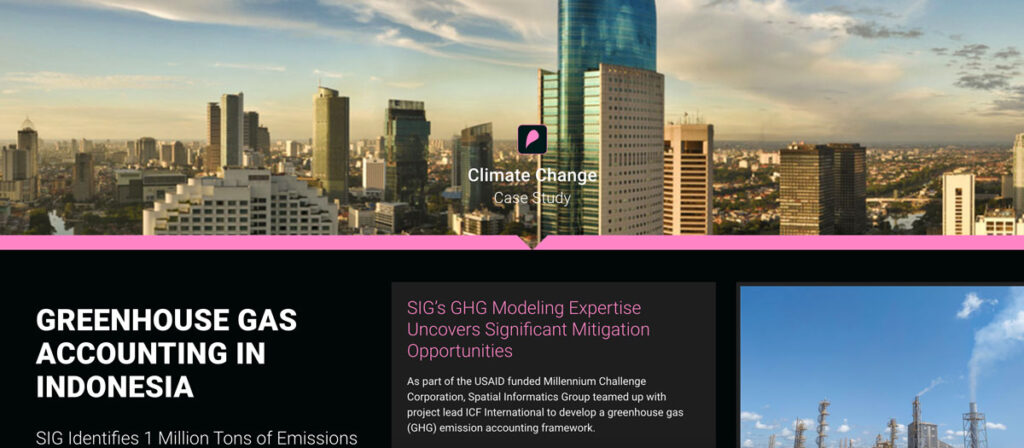Greenhouse Gas Accounting in Indonesia

As part of the USAID funded Millennium Challenge Corporation, Spatial Informatics Group teamed up with project lead ICF International to develop a greenhouse gas (GHG) emission accounting framework.
Mapping Forest Degradation In Nepal With Remote Sensing

Under international climate change agreements, countries must estimate greenhouse gas emissions related to deforestation and forest degradation.
In cases of deforestation—when trees are cut and replaced by annual crops, for instance—the change in land cover is clearly visible. Forest degradation, by contrast, is more subtle. Trees are lost but the land remains forested and often recovers quickly—making the changes hard to detect.
Can You Fight Climate Change By Burning Wood? It’s Complicated

Wood grown in the United States is being ground up, dried out, pressed into pellets, and shipped to Europe, where power plants burn it to make electricity.
Is this good for the planet?
With Biomass Energy, The Carbon Savings Are In the Details

Biomass energy, Michael Moore’s new documentary Planet of the Humans faces criticism from environmentalists for using outdated data and simplistic analyses on renewables.
Forest Carbon Markets: Native People Quantify The Growing Value Of Native Lands

Carbon markets are based on the premise that sources (greenhouse gas-emitting power plants, vehicles, farm animal waste) and sinks (greenhouse gas-absorbing forests, biogas digesters, healthy soil) can be “traded” between states, regions and countries to help each other offset and reduce overall carbon emissions. While carbon markets are not a perfect solution to atmospheric carbon reduction, they have benefits…not least of which is getting communities to take stock of their natural resources and find ways to better manage, protect, and restore them.
Implementing Low Emission Development

SIG attended the 4th LEDS GP meeting in the Dominican Republic, focusing on financing low-emission development and climate resilience strategies.
